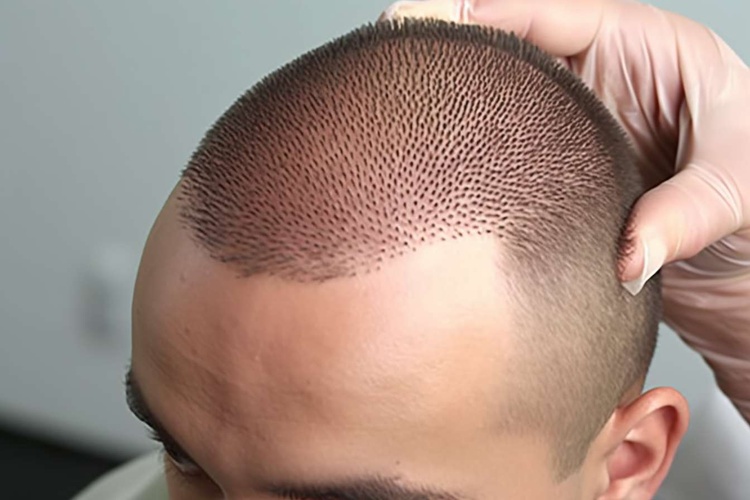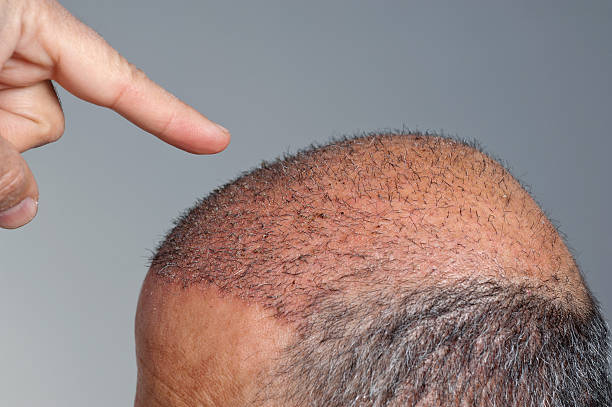Scalp Micropigmentation: A Modern Solution for Hair Loss
Hair loss affects millions worldwide, causing distress and impacting self-esteem. While traditional treatments like wigs and transplants have long been available, a newer technique is gaining traction: scalp micropigmentation (SMP). This innovative procedure involves depositing pigment into the scalp to create the appearance of a fuller head of hair. Unlike temporary cosmetic solutions, SMP offers a semi-permanent option that can last for years with proper care. As more people seek alternatives to invasive surgeries or ongoing medication, SMP has emerged as a compelling choice for those looking to address thinning hair or baldness. Its rising popularity stems from its ability to provide natural-looking results with minimal downtime and maintenance.

How Scalp Micropigmentation Works
The SMP process involves the use of micro-needles to deposit pigment into the dermis layer of the scalp. Practitioners carefully select pigment colors to match the client’s natural hair color and skin tone. The technique creates thousands of tiny dots that resemble hair follicles, giving the illusion of a closely shaved head or adding density to thinning areas. Multiple sessions are typically required to achieve the desired result, with each session building upon the previous one to create depth and dimension.
Candidates for Scalp Micropigmentation
SMP caters to a diverse range of individuals experiencing hair loss. Men with male pattern baldness often opt for SMP to create the appearance of a full head of closely cropped hair. Women with thinning hair can benefit from the procedure to add density and camouflage visible scalp areas. Additionally, SMP has proven effective for those with alopecia areata, scarring from injuries or surgeries, and even individuals undergoing chemotherapy. The versatility of the technique makes it suitable for various hair loss patterns and causes.
The Procedure and Recovery Process
A typical SMP treatment plan consists of three to four sessions, each lasting several hours. During the initial consultation, the practitioner assesses the client’s scalp condition, discusses desired outcomes, and designs a customized treatment plan. The actual procedure involves minimal discomfort, with most clients reporting a slight pricking sensation. Local anesthesia is rarely necessary. Following each session, the scalp may appear slightly red and swollen, but these effects typically subside within 24 to 48 hours. Clients can usually resume normal activities immediately, with some minor aftercare instructions to follow.
Long-term Results and Maintenance
One of the key advantages of SMP is its longevity. With proper care, results can last for several years before a touch-up is needed. The pigments used in SMP are designed to retain their color and resist fading, although some gradual lightening may occur over time due to natural skin exfoliation and sun exposure. To maintain optimal results, clients are advised to protect their scalp from excessive sun exposure, avoid harsh chemical treatments, and follow a gentle cleansing routine. Periodic touch-up sessions, typically every few years, can help maintain the desired look and address any areas that may have faded.
Psychological Impact and Patient Satisfaction
The psychological benefits of SMP can be profound for those struggling with hair loss. Many clients report increased confidence and improved self-image following the procedure. Unlike wigs or hairpieces, which may shift or require constant adjustment, SMP provides a low-maintenance solution that allows individuals to feel more at ease in social and professional settings. Studies have shown high satisfaction rates among SMP recipients, with many citing the natural-looking results and the ability to engage in activities like swimming without worry as key factors in their positive experience.
Comparing SMP to Other Hair Loss Solutions
When considering hair loss treatments, it’s essential to understand how SMP compares to alternatives. Unlike hair transplants, SMP does not require donor hair and is suitable for individuals with extensive baldness. It also avoids the ongoing expense and potential side effects associated with medications like finasteride or minoxidil. While SMP cannot restore actual hair growth, it provides an immediate cosmetic improvement that can be particularly appealing to those seeking a non-invasive option. However, it’s important to note that SMP may not be suitable for individuals who desire the ability to grow and style their hair in various lengths.
The Future of Scalp Micropigmentation
As technology and techniques continue to advance, the future of SMP looks promising. Researchers are exploring ways to improve pigment formulations for even longer-lasting results and a wider range of realistic hair colors. Additionally, advancements in needle technology may lead to even more precise and natural-looking outcomes. The growing acceptance of SMP as a mainstream hair loss solution is likely to drive further innovation and accessibility in the field. As more practitioners gain expertise in the technique, it’s anticipated that SMP will become an increasingly common option for those seeking to address hair loss concerns.
In conclusion, scalp micropigmentation represents a significant advancement in the field of hair loss solutions. By offering a non-invasive, long-lasting, and natural-looking alternative to traditional treatments, SMP has carved out a unique niche in the beauty and wellness industry. As awareness grows and techniques continue to refine, it’s likely that SMP will play an increasingly important role in helping individuals regain confidence and control over their appearance in the face of hair loss.





